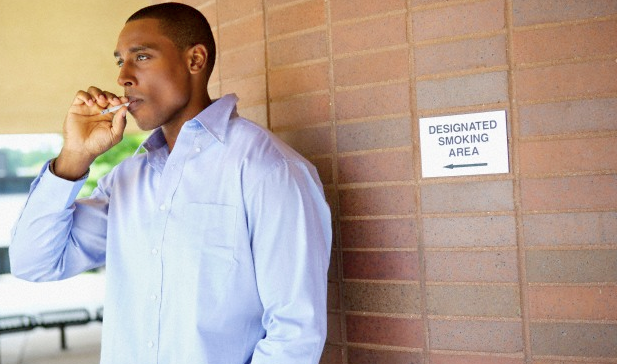
There are signs you should pay attention to in order to determine if you are at risk for lung cancer.
Lung cancer causes more cancer deaths in the United States each year than deaths related to colon, prostate and breast cancers combined, according to the American Cancer Society.
READ: Lung Cancer: 4 Things Blacks Need To Know
Lung cancer occurs when you have an uncontrollable growth of abnormal cells that starts in one or both of your lungs. This growth occurs in the cells that line your air passages.
Instead of these abnormal cells developing into healthy lung tissue, they multiply quickly and form tumors. This leads to your lung(s) losing their ability to provide oxygen into your bloodstream.
The good news is that you can significantly decrease your risk for lung cancer with a few lifestyle changes.
Smoking
If you smoke, you are at an increased risk of getting lung cancer.
Smoking is the number one cause of lung cancer.
Of those who have lung cancer, 90% of these individuals are smokers. This smoking is not limited to cigarettes, but also includes tobacco products, cigars, and pipes. 7,000 toxic chemicals are present in tobacco smoke, many of which are poisons.
Smoking increases your lung cancer by 15 to 30 times versus non-smokers' risk. This cancer caused by smoking can also cause cancer in others parts of your body.
Prevention Tip: The good news is that if you quit smoking at any age, you can significantly lower your risk of developing lung cancer.
Secondhand smoke exposure
If you do not smoke, but you are around someone who does smoke regularly, this increases your risk for lung cancer as well.
When you breathe in secondhand smoke, it is very similar to smoking. Forty percent of adults and 50% of kids who don’t smoke are exposed to secondhand smoke on a regular basis.
The Centers for Disease Control and Prevention (CDC) states that some 7,300 people who are non-smokers die from secondhand smoke which has caused them to have lung cancer.
Prevention Tip: Protect yourself by limiting your exposure to smokers as much as possible to significantly decrease your risk for lung cancer.
Exposure to asbestos, radon gas and other carcinogens
Asbestos, arsenic, chromium, diesel exhaust, and some forms of silica, and nickel can also increase your chances of developing lung cancer.
Some industries in which these chemicals are prevalent include factories, demolition settings, insulation, shipbuilding, carpentry, and for those working with the installation of vehicle brake linings.
READ: 10 Cancer Symptoms Men Ignore
Radon gas, which comes from the breakdown of uranium in soil, rock and water, is another factor that can lead to you developing lung cancer. It can accumulate in your home or a building. Radon is particularly important to be aware of because it is almost undetectable via smell, taste or sight.
However, it is potent and causes 20,000 cases of lung cancer each year according to the U.S. Environmental Protection Agency (EPA). It is also the second leading cause of lung cancer.
Prevention Tip: If you are unsure if radon exists where you live or work, you can purchase radon testing kits, which can be determined if you have safe or unsafe levels in your environment.
Cancer patients and family history
Cancer patients who have had radiation therapy are also at risk of developing lung cancer.
Family history of lung cancer is a top factor as well. Determine if you have a parent, sibling, or children with lung cancer. These factors place you at a higher risk for lung cancer.
Prevention Tip: Managing your health, diet and paying attention to signs of symptoms of lung cancer which include, but are not limited to a persistent cough which can be associated with blood, wheezing, weight loss and chest are signs in which you should immediately see your Physician.
Lung cancer is one of the leading causes of death in both men and women in the United States. But, taking these precautionary steps will help reduce the chances of developing lung cancer. It will also help you educate those around you.
For more lung cancer resources, click here.









